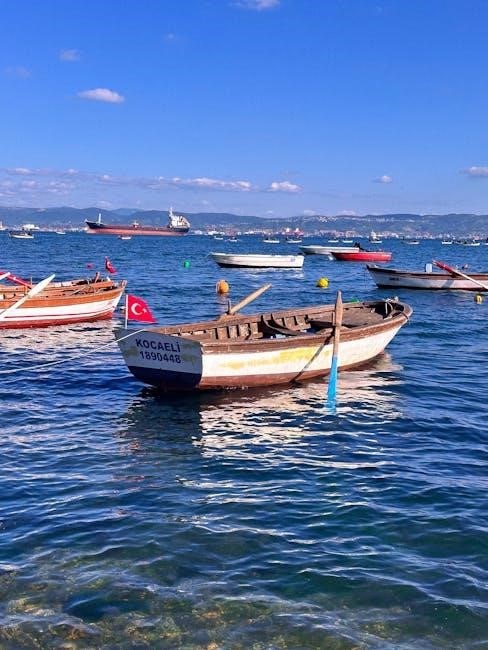Buoy 10‚ where the Columbia River meets the Pacific‚ is a world-renowned fishing destination. Expert guides offer unparalleled knowledge of tides‚ fish behavior‚ and techniques‚ ensuring unforgettable salmon fishing experiences.
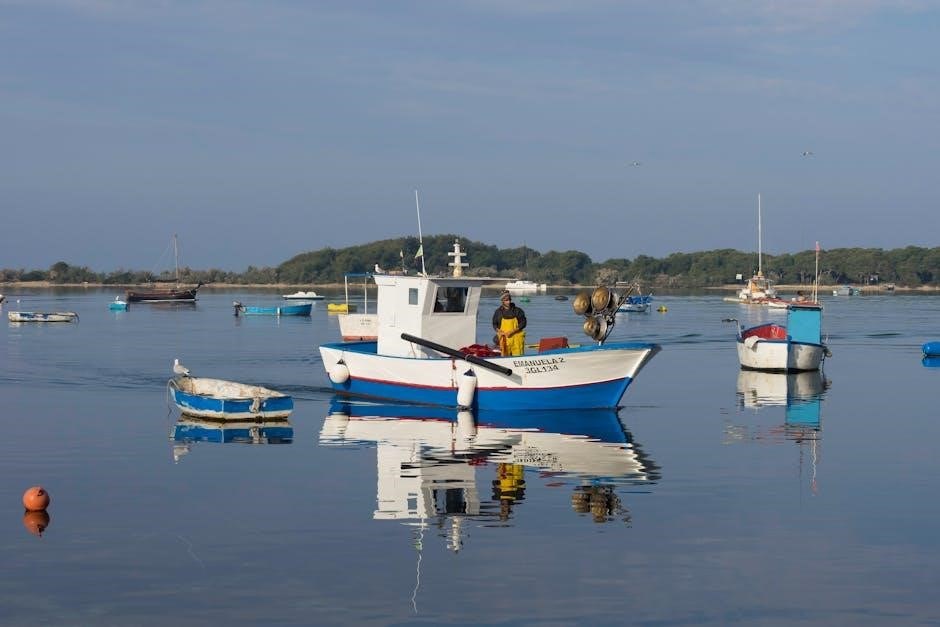
Overview of Buoy 10
Buoy 10‚ located at the mouth of the Columbia River near Astoria‚ Oregon‚ is a renowned fishing destination. It marks the boundary between the river and the Pacific Ocean‚ creating a unique ecosystem rich in marine life. Known for its dynamic fishing conditions‚ Buoy 10 is particularly famous for salmon fishing‚ especially Chinook and coho species. The area is prized for its challenging yet rewarding angling opportunities‚ attracting both seasoned anglers and novices. The constant interplay of river and ocean currents makes it a hotspot for migratory fish. Fishing guides play a crucial role here‚ as their expertise helps navigate the complex tides and maximize the chances of a successful catch.
Importance of Fishing Guides in Buoy 10
Fishing guides are essential for a successful experience at Buoy 10 due to the area’s unique and challenging conditions. Their extensive knowledge of the waters‚ fish behavior‚ and optimal fishing techniques ensures anglers maximize their chances of catching salmon and other species. Guides provide valuable insights into the best fishing spots‚ tackle‚ and bait‚ saving time and effort. They also handle logistics‚ allowing anglers to focus on the fishing experience. For novices‚ guides offer expert instruction‚ while experienced anglers benefit from their deep understanding of the fishery. Their expertise is crucial for navigating the dynamic tides and currents‚ making them indispensable for both beginners and seasoned fishermen.
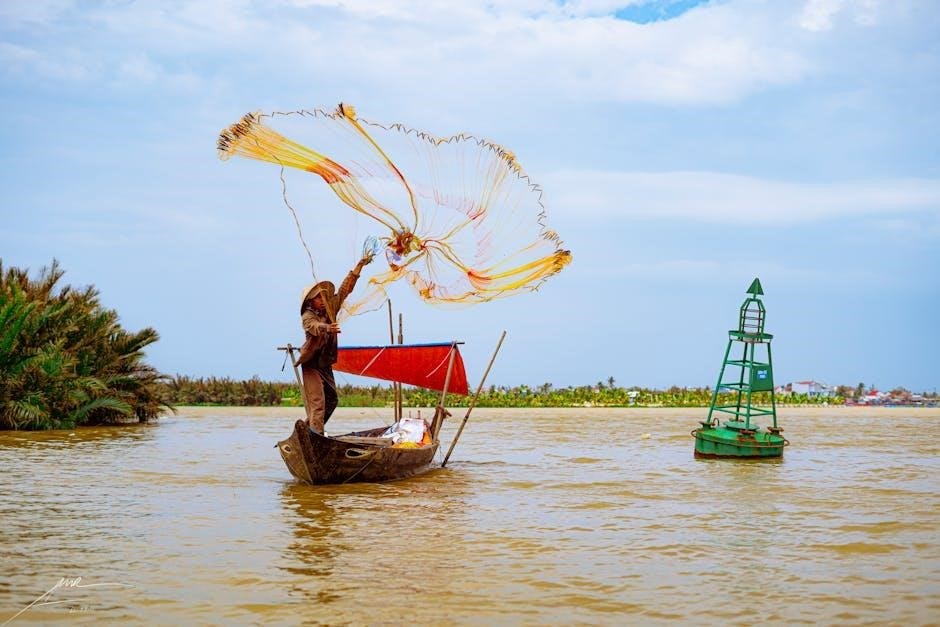
Location and Significance
Buoy 10‚ located at the mouth of the Columbia River near Astoria‚ Oregon‚ marks the entrance to one of the Pacific Northwest’s most famous fisheries‚ attracting anglers worldwide.
Geographical Location of Buoy 10
Buoy 10 is strategically located at the mouth of the Columbia River‚ near Astoria‚ Oregon‚ where the river flows into the Pacific Ocean. This iconic marker signifies the entrance to one of the most productive fisheries in the Pacific Northwest. The buoy stands in the rugged‚ churning waters where freshwater and saltwater mix‚ creating a unique ecosystem that attracts a wide variety of fish species. Its proximity to the ocean ensures that salmon and other marine life are abundant‚ making it a hotspot for both recreational and commercial fishing. The location’s dynamic environment‚ with strong currents and tidal fluctuations‚ adds to its reputation as a challenging yet rewarding destination for anglers.
Historical and Cultural Significance
Buoy 10 holds deep historical and cultural significance as a landmark at the mouth of the Columbia River. For centuries‚ it has served as a vital marker for mariners navigating the treacherous waters where the river meets the Pacific Ocean. Indigenous tribes relied on the river for food and trade‚ and early settlers used it as a gateway to the West. Today‚ Buoy 10 is a symbol of resilience and prosperity‚ attracting anglers and fishing guides from across the globe. Its rich history is intertwined with the region’s identity‚ making it more than just a fishing spot but a cultural and economic hub. The buoy itself represents the intersection of tradition and modern fishing practices‚ preserving the legacy of this iconic fishery.
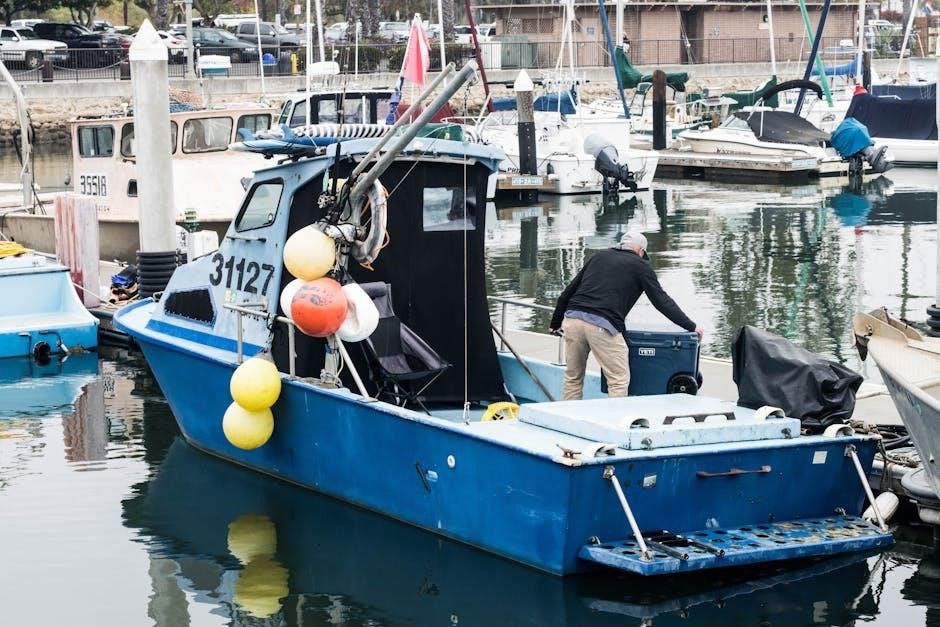
Fishing Seasons at Buoy 10
Buoy 10’s fishing seasons peak in late summer and early fall‚ with August and September offering prime opportunities to catch Chinook and coho salmon. Tides and fish migration patterns significantly influence the timing and success of fishing trips.
Peak Fishing Seasons
Buoy 10’s peak fishing seasons occur in late summer and early fall‚ with August and September being the most productive months. During this time‚ large schools of Chinook and coho salmon migrate through the area‚ fresh from the Pacific Ocean. These fish are at their peak strength and flavor‚ making them highly sought after by anglers. The combination of optimal tidal movements and salmon migration patterns creates prime conditions for successful fishing trips. Whether you’re an experienced angler or a novice‚ the peak season at Buoy 10 offers unparalleled opportunities to land trophy-sized fish. Booking a knowledgeable guide during these months is highly recommended to maximize your chances of success.
Seasonal Variations and Fish Behavior
Seasonal variations significantly influence fish behavior at Buoy 10‚ with salmon migrating through the area at different times of the year. Chinook salmon typically arrive earlier‚ followed by coho salmon‚ with their activity peaking during specific tidal phases. Fish behavior changes with water temperature and bait availability‚ making it crucial for anglers to adapt their techniques. For example‚ during warmer months‚ salmon often swim deeper‚ while cooler waters bring them closer to the surface. Understanding these patterns is key to successful fishing‚ as fish become more aggressive during certain tidal movements. Local guides play a vital role in interpreting these seasonal shifts‚ helping anglers adjust their strategies to match the fish’s behavior and maximize their catch.
Types of Fish in Buoy 10
Buoy 10 is renowned for its abundant Chinook and coho salmon‚ fresh from the Pacific. The area also hosts sturgeon‚ steelhead‚ and trout‚ offering diverse fishing opportunities.
Salmon Species
Buoy 10 is a hotspot for salmon fishing‚ particularly Chinook and coho species. Chinook salmon‚ known for their size and strength‚ are a prime target for anglers. Coho salmon are also abundant‚ offering exciting catches with their energetic fights. Both species migrate from the Pacific Ocean into the Columbia River‚ making Buoy 10 a unique location to intercept them. The area’s nutrient-rich waters ensure these salmon are at their peak freshness and flavor. Anglers often use trolling techniques with herring and anchovy baits to lure these species. Understanding their migration patterns and seasonal behaviors is key to a successful fishing experience at Buoy 10.
Other Fish Species
Buoy 10 offers a diverse range of fish species beyond salmon‚ attracting anglers with varied interests. Steelhead and trout are popular targets‚ known for their aggressive bites and acrobatic fights. Sturgeon also inhabit these waters‚ providing a unique challenge for experienced anglers. These species thrive in the nutrient-rich environment where the Columbia River meets the Pacific Ocean. Anglers often use specific lures and techniques tailored to these fish‚ such as drift fishing for steelhead or bottom fishing for sturgeon. The presence of these species adds to the excitement of fishing at Buoy 10‚ making it a destination for those seeking a wide variety of fishing experiences.
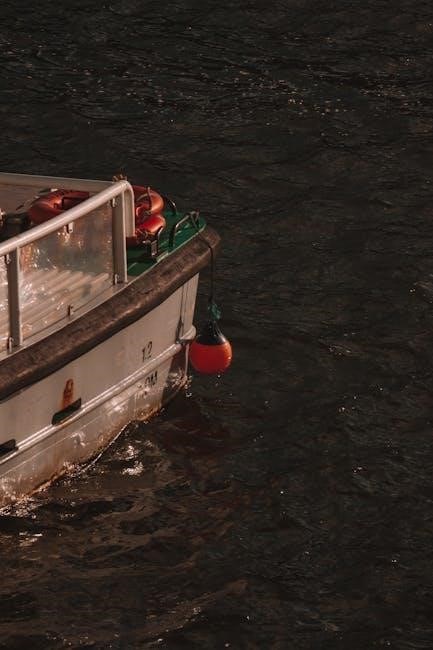
Choosing the Right Fishing Guide
Selecting an experienced guide is crucial for a successful Buoy 10 fishing trip. Expert guides offer deep knowledge of tides‚ fish behavior‚ and proven techniques‚ ensuring a memorable experience.
Tips for Selecting a Reputable Guide
Selecting the right fishing guide for Buoy 10 requires careful consideration. Experience and local knowledge are key‚ as guides familiar with the area can maximize your chances of success. Look for guides with a proven track record of catching salmon and other species. Check reviews and testimonials from previous clients to ensure reliability. Additionally‚ verify their equipment quality and ensure they use appropriate gear for the fishery. A reputable guide will also emphasize safety and adherence to local regulations. Ask about their fishing strategies and whether they align with your preferences‚ such as trolling or casting. Finally‚ confirm their licensure and insurance to ensure a legal and secure experience. By doing your research‚ you can choose a guide who enhances your Buoy 10 fishing adventure.
Popular Fishing Guides in Buoy 10
Buoy 10 is home to several well-known and respected fishing guides who have built reputations for their expertise and success. Stotts Fishing Adventures is a top choice‚ offering family-friendly salmon fishing trips on the Columbia River. Pacific Drifter Guide Service is another popular option‚ known for their skilled guides and high-quality equipment. Buoy 10 Guide Service specializes in Chinook and coho salmon fishing‚ providing personalized experiences for anglers of all skill levels. These guides are praised for their deep knowledge of the fishery‚ adaptability to changing conditions‚ and commitment to ensuring memorable fishing experiences. Their expertise and passion make them standouts in the Buoy 10 fishery‚ helping anglers land impressive catches season after season.
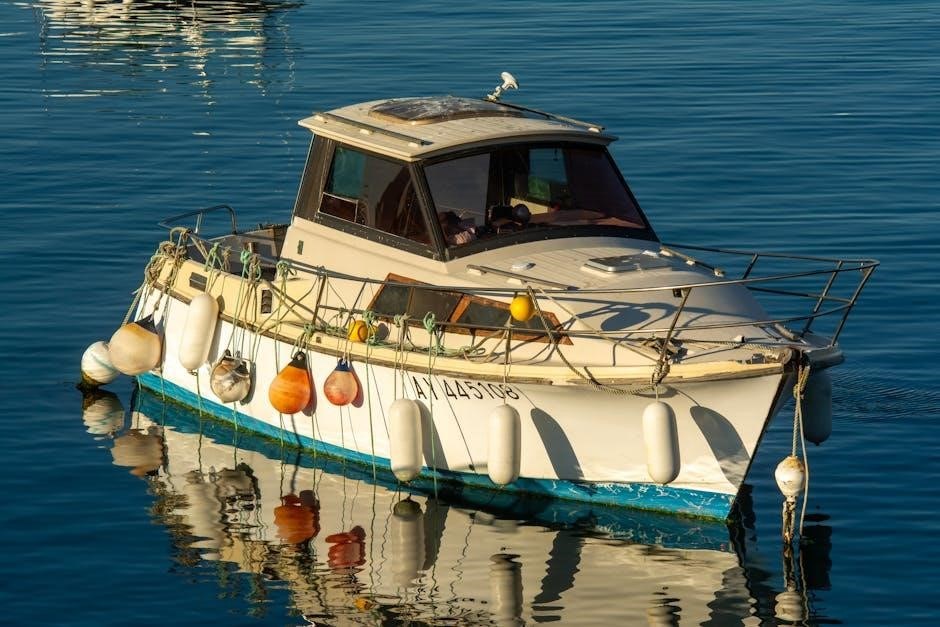
Tackle and Gear
Durable rods and reels with line counters are essential for Buoy 10 fishing. Popular lures include herring and anchovy baits‚ often used with flashers for trolling‚ ensuring successful catches in strong currents.
Essential Equipment for Buoy 10 Fishing
Fishing at Buoy 10 requires sturdy‚ high-quality gear to handle the strong currents and large fish. Rods should be durable‚ preferably 9-10 feet long‚ paired with reels featuring line counters for accurate depth control. A monofilament or braided line with a minimum of 15-20 lb test is recommended. Hooks sized 3/0 to 5/0 are ideal for salmon‚ while swivels help prevent line twists. Popular lures include herring and anchovy rigs‚ often used behind flashers to attract salmon. Tackle boxes should be well-stocked with an assortment of lures‚ hooks‚ and weights. A net and coolers are also essential for landing and storing your catch. Investing in the right equipment ensures a successful and enjoyable fishing experience at Buoy 10.
Recommended Bait and Lures
When fishing at Buoy 10‚ the right bait and lures can make a significant difference in catching salmon. Live herring and anchovies are highly effective‚ often used behind a flasher to mimic natural baitfish movement. Spin-N-Glo lures in vibrant colors like chartreuse and pink are also popular for attracting salmon. Cut-plug herring rigged with a hook and swivel is another proven setup. For artificial lures‚ plugs and spoons that mimic injured baitfish work well. Flashers and dodgers add extra attraction‚ creating a flickering motion that draws fish in. Using a combination of these baits and lures‚ tailored to the specific fishing conditions‚ can greatly increase your chances of a successful catch at Buoy 10.
Fishing Techniques
Buoy 10 fishing demands adaptability‚ with popular methods including trolling‚ casting‚ and drifting. Anglers use herring‚ anchovy baits‚ and specialized setups to target salmon effectively in these dynamic waters.
Trolling and Casting
Trolling and casting are essential techniques for Buoy 10 fishing‚ particularly for targeting salmon. Trolling involves dragging lures or bait behind a moving boat‚ often using herring or anchovy rigs. This method is highly effective in the strong currents where fish congregate. Long rods with soft action and reels equipped with line counters are ideal for this approach. Casting is another popular method‚ where anglers cast their lines into specific zones‚ such as near structure or schools of baitfish. Both techniques require precision and adaptability to changing conditions. Guides often recommend using flashers or dodgers to attract fish in deeper waters. These methods are proven to yield impressive results in Buoy 10’s dynamic fishing environment.
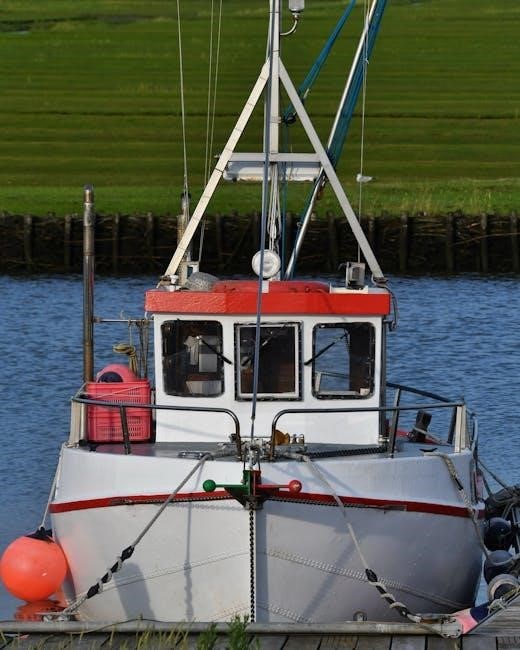
Drifting Techniques
Drifting is a versatile and effective method used in Buoy 10 fishing‚ particularly for targeting species like salmon and sturgeon. This technique involves allowing the boat to drift naturally with the current‚ mimicking the movement of baitfish. Anglers often use weighted rigs or bottom bouncers to reach desired depths. Drifting is especially effective in areas with strong currents‚ as it allows the bait to present naturally to feeding fish. Guides typically position the boat to drift over structural features like reefs or drop-offs‚ where fish tend to congregate. The key to success lies in maintaining the right drift speed and depth‚ ensuring the lure or bait stays in the strike zone. This method requires patience and a keen understanding of the river’s dynamics.
Local Regulations
Fishing at Buoy 10 requires adherence to stringent local regulations to ensure conservation and sustainable fishing practices. Anglers must follow rules on gear usage‚ protected areas‚ and catch limits to preserve the fishery’s health and future.
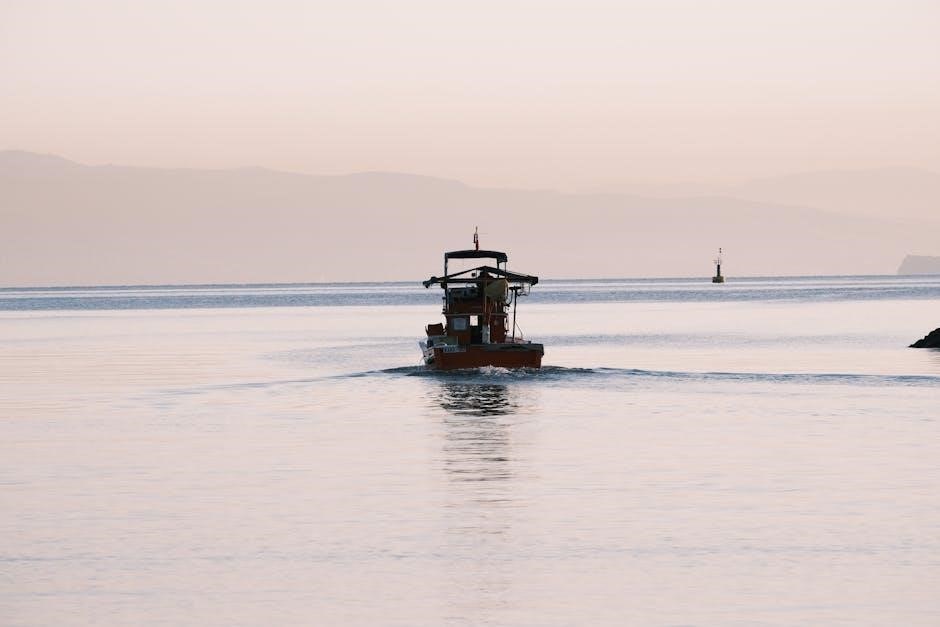
Fishing Licenses and Permits
Fishing at Buoy 10 requires a valid fishing license from either Oregon or Washington‚ as the location straddles both states. Anglers must ensure they have the appropriate permits for the species they target‚ such as salmon or steelhead. Bag limits and size restrictions are strictly enforced to protect fish populations and maintain ecological balance. Licenses can be purchased online or at local tackle shops‚ and guides often assist clients with compliance. Additionally‚ anglers must be aware of closed areas and seasonal restrictions to avoid penalties. Staying informed about local regulations is crucial for a legal and successful fishing experience at Buoy 10.
Bag Limits and Size Restrictions
Fishing at Buoy 10 is subject to strict bag limits and size restrictions to ensure sustainable fishing practices. Anglers are typically allowed a limited number of fish per species‚ with specific size requirements to protect juvenile and breeding populations. For example‚ Chinook salmon must meet a minimum length‚ while coho salmon may have different regulations. These limits are enforced by state wildlife agencies and are updated seasonally to reflect fish population health. It’s essential for anglers to stay informed about current restrictions to avoid penalties. Guides often help clients adhere to these rules‚ ensuring a responsible and ethical fishing experience at Buoy 10.
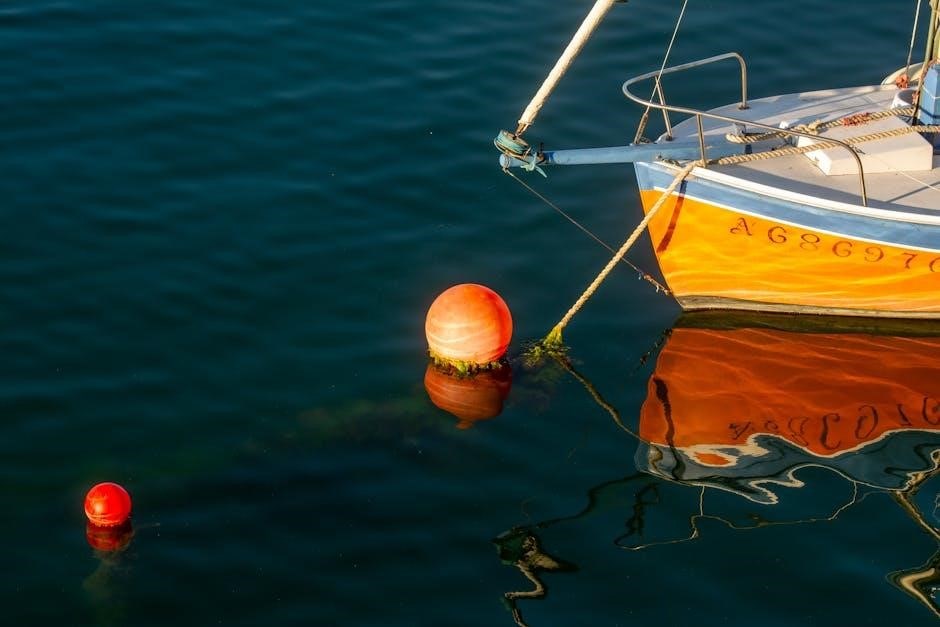
Tides and Currents
Tides and currents at Buoy 10 play a crucial role in fishing success. Strong tidal flows and shifting water levels require precise timing and strategic positioning to catch fish effectively.
Impact of Tides on Fishing
The tides at Buoy 10 significantly influence fishing conditions. During flood tides‚ salmon move into the Columbia River‚ creating prime fishing opportunities near the buoy. Conversely‚ outgoing tides push fish into deeper waters‚ requiring anglers to adjust their strategies.
Guides emphasize the importance of understanding tidal patterns to locate schooling fish effectively. The gravitational pull of the tides alters water levels and currents‚ impacting fish behavior and feeding habits. By aligning fishing efforts with tidal movements‚ anglers can maximize their chances of a successful catch‚ making Buoy 10 a dynamic and rewarding fishery.
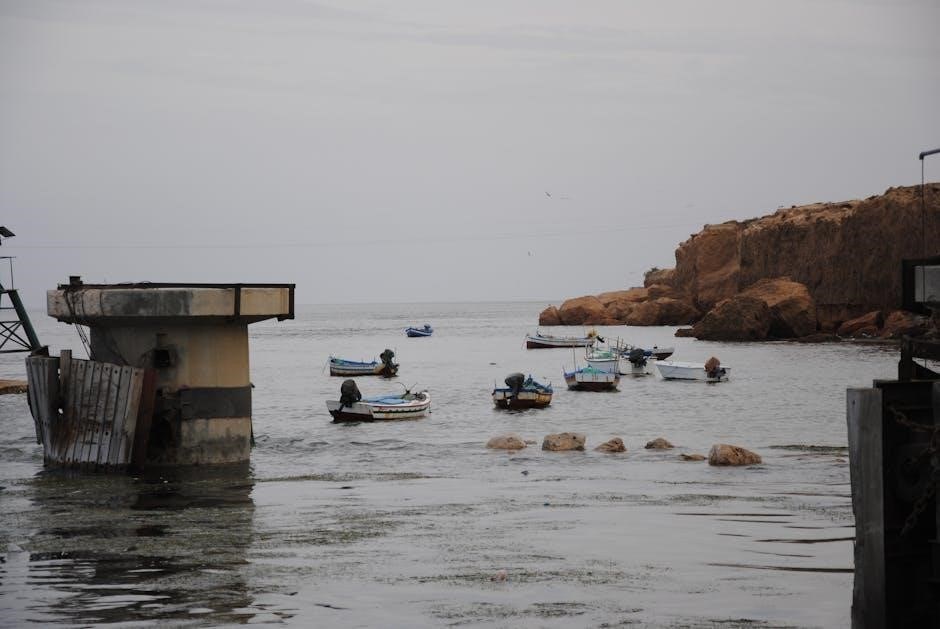
Navigating Currents
Navigating currents at Buoy 10 is crucial due to the powerful flow where the Columbia River meets the Pacific. Strong tidal currents and river discharge create challenging conditions‚ requiring precise boat control and knowledge of water dynamics.
Local guides excel at reading currents‚ positioning boats effectively to target fish. Understanding eddies and rips helps anglers present lures naturally‚ increasing chances of a strike. The combination of river and ocean currents demands adaptability‚ making experienced guidance invaluable for success in this dynamic fishery.
Weather Conditions
Buoy 10 fishing is influenced by dynamic weather‚ with frequent rain‚ wind‚ and fog. Experienced guides adapt to these conditions‚ ensuring safe and successful fishing trips.
Preparing for Variable Weather
Fishing at Buoy 10 requires preparing for unpredictable weather conditions. The area experiences frequent rain‚ strong winds‚ and fog‚ which can impact visibility and safety. Experienced guides recommend dressing in layered‚ waterproof clothing to stay dry and comfortable. A good rain jacket‚ insulated layers‚ and sturdy boots are essential. Additionally‚ bring a hat‚ gloves‚ and polarized sunglasses to handle varying light conditions. It’s also crucial to ensure your gear is weather-resistant‚ including rods‚ reels‚ and electronics. Communication devices‚ such as a two-way radio‚ can help guides stay connected during low-visibility situations. Being prepared for changing weather ensures a safer and more enjoyable fishing experience.
